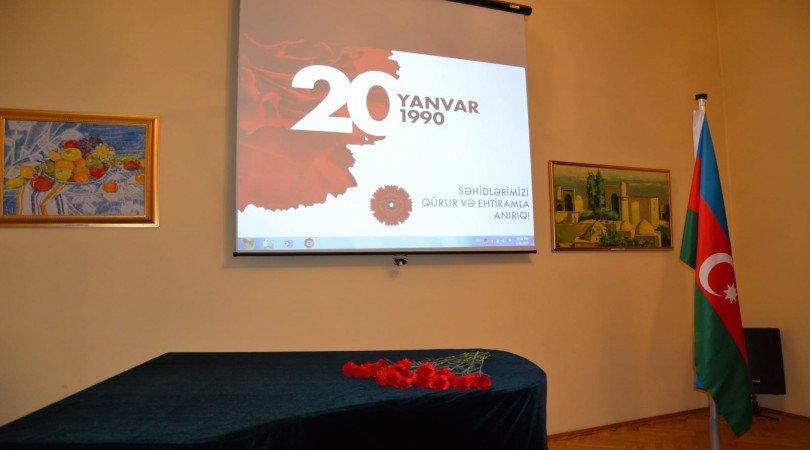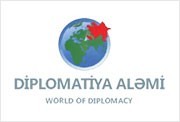AZƏRBAYCAN RESPUBLİKASININ MACARISTANDAKI SƏFİRLİYİNİN 31 MART-AZƏRBAYCANLILARIN SOYQIRIMI GÜNÜ İLƏ ƏLAQƏDAR PRESS-RELİZİ
PRESS-RELEASE
30.03.2018
31 March - Day of Genocide of Azerbaijanis
March 31, commemorated in the Republic of Azerbaijan as the Day of Genocide of Azerbaijanis and 100 years have passed since the bloody massacre committed by the Armenians against Azerbaijanis on March 1918.
The Gulustan and Turkmenchay treaties, signed in 1813 and 1828 respectively, laid the foundation of the split of the Azerbaijani people and division of their historical lands, subsequently leading to expropriation of those lands. In a very short span of time, the mass resettlement of the Armenians in the Azerbaijani lands began. Although the Armenians, who were resettled in the territories of Iravan (now Yerevan), Nakhchivan and Karabakh khanates, were less in number than the Azerbaijanis living there, and managed, sponsored by their patrons, to establish an administrative unit called “Armenian province”. The artificial division of the state territories encouraged the displacement of the indigenous people of Azerbaijan from their lands as well as execution of the genocide policy against the Azerbaijani people. In order to realize the idea of “great Armenia” on the Azerbaijani lands, the Armenians started the process of falsification of their own history and the history of Azerbaijan and the entire Caucasus. Inspired by the idea of creating “Greate Armenia”, the Armenians carried out a series of bloody massacres against Azerbaijanis in 1905-1907.
The massacre of 1918 was a more skillfully prepared and ruthlessly implemented act than the 1905-1907 attacks. The victory of Bolsheviks during the Russian revolution of 1917 and thereby collaboration with them gave the Dashnaksutyun Party way for smooth realization of its nationalistic objectives. Capitalizing on the situation that followed October 1917 Revolution in Russia, Armenian nationalists began to pursue the implementation of their plans under the banner of Bolshevism. In 1918, leader of the Russian Bolsheviks Vladimir Lenin appointed ethnic Armenian Stephan Shaumyan Extraordinary Commissar of the Caucasus. By the acknowledgements of Stephan Shaumyan, 6000 armed soldiers of the Baku Soviet and 4000 armed men from Dashnaksutyun Party took part in the massacre of Azerbaijani civilians. 3 On 30 March Armenian-Bolshevik units subjected Baku to volley fire from ships. Then, armed Dashnaks attacked the homes of Azerbaijanis and carried out a merciless slaughter. On 31 March and in the first days of April, the carnage became even more ruthless. Thousands of Azerbaijani civilians were killed only because of their ethnicity. In this period, Armenian-Bolshevik units wiped out more than 20,000 Azerbaijani civilians in Baku: people were burned in their homes, killed and tortured with unparalleled cruelty. As a result, more than 16,000 people were killed with utmost barbarity in the Guba province in the first five months of 1918; a total of 167 villages were destroyed, 35 of which do not exist to this day. The Armenians had installed machine guns in various places of the city in order to shoot those who were trying to escape.
Avanes Apresyan, an Armenian officer, one of the active participants in the massacre of the Azerbaijanis, wrote in his memoirs titled “Men were like this,” that in Baku alone, they murdered 25,000 Azerbaijanis in the March massacre. However, genocide of the Azerbaijanis by the Dashnaks was not limited to Baku. Within a short period of time, Armenians committed massacres in Shamakhy, Guba, Irevan, Zengezur, Karabakh, Nakhchivan and Kars.
The March 1918 events became the focus of attention of Azerbaijan Democratic Republic (ADR), the 100th anniversary of which is celebrated this year. In order to investigate violence against the Azerbaijani population the Council of Ministers of ADR adopted a decision on the establishment of the Extraordinary Investigation Commission (EIC) on 15 July 1918. At the first stage, the commission was involved in investigation of the March genocide, the Armenian brutalities and grave crimes committed by the Armenians in the provinces of Shamakhi and Iravan (Yerevan). A special authority was established at the Ministry of Foreign Affairs to increase the world community`s awareness of the truth about these tragedies. However, after the collapse of Azerbaijan Democratic Republic, the process was halted and the investigation of the incidents and the attempts to give a political and legal assessment to these events failed. Only 80 years later, on March 26, 1998, those horrific events received a proper political assessment when President of the Republic of Azerbaijan Heydar Aliyev signed the Decree “On the genocide of Azerbaijanis” and March 31 was declared the Day of Genocide of Azerbaijanis.
Numerous new facts and documents have been collected in the past years thanks to researches in this direction. The mass grave unearthed in Guba region reveals one of the bloody pages of this tragedy. In April-May 1918, in Guba region alone 167 villages were razed to the ground. The mass graveyard in Guba region was unearthed on April 1, 2007, during the landscaping works on the site. In 2007, employees of the Institute of Archeology and Ethnography of Azerbaijan National Academy of Sciences launched a large-scale research in the mass grave, which was completed in September 2008. The research revealed that the mass grave was an evidence of the genocide committed by the Armenians against the local citizens in 1918. More than 400 human corpses of different age were found, including 50 children, 100 women, and the elderly. The research also found that along with the Azerbaijanis there were members of the Lezgi, Jewish, Tat, and other ethnic groups living in Guba region among those brutally killed and buried in the graveyard. The official opening ceremony of the Guba Genocide Memorial Complex in the site of the graveyard was held on September 18, 2013.
On January 18, 2018, President of the Republic of Azerbaijan Ilham Aliyev signed an Order on commemoration of the 100th anniversary of the 1918 genocide of the Azerbaijanis. The Order said: “The historical evidence revealed that the geography of bloody acts committed by the Armenian nationalists in March-April and in the late 1918s is much more widespread and the number of victims of tragedy is much bigger than expected.”
The history showed that the Armenian nationalists did not give up their notorious intentions, massacred civilians mercilessly and in order to curtain their crimes falsified the historical facts in favour of their interests.
As a result of the next ethnic cleansing and aggression policy started since 1988, Armenia occupied 20 percent of the territory of Azerbaijan-Nagorno-Karabakh region and seven surrounding districts. One million of the Azerbaijanis became refugees and IDPs, their rights were grossly violated. During the years of occupation, the Armenian nationalists and terrorists committed genocides in Khojaly city, Karkichahan, Malibeyli, Gushchular, Garadagly, Agdaban villages and in other settlements of Azerbaijan. The genocide policy of Armenia continues up to now that results in the killing of civilians, including children.
The territorial integrity of Azerbaijan and the violated rights of refugees and IDPs should be restored. These severe crimes against humanity should be legally and politically assessed at the international level and the criminals who killed innocent civilians and committed genocide should be prosecuted before the tribunal and punished.

.jpeg)



















